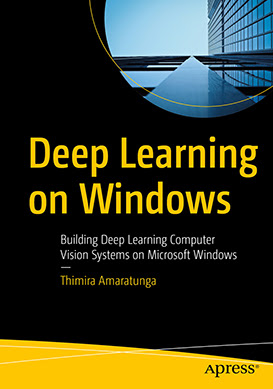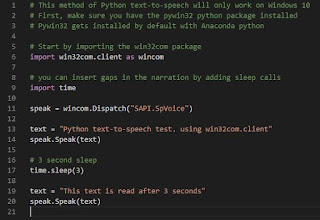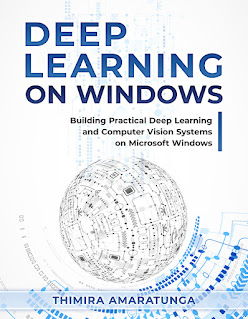 |
| Deep Learning Models Over the Years |
- Top-1 Accuracy - Where the highest probability/confidence prediction from the model matches the expected class
- Top-5 Accuracy - Where the expected class is within the top 5 predictions of the model
 |
| Deep Learning Models Over the Years |
Pre-orders for my new book, Deep Learning on Windows, are Now Open at Amazon.com!
Deep Learning on Windows is my latest book, and it is the longest and the most comprehensive book I have written to date. The book is meant for both beginners and intermediates to deep learning. It covers topics from setting up your tools on Windows and getting started, to complex but fun topics in deep learning and computer vision.
 |
| The Cover of 'Deep Learning on Windows' |
If you have been using data generators in Keras, such as ImageDataGenerator for augment and load the input data, then you would be familiar with the using the *_generator() methods (fit_generator(), evaluate_generator(), etc.) to pass the generators when trainning the model.
But recently, if you have switched to TensorFlow 2.1 or later (and tf.keras), you might have been getting a warning message such as,
Model.fit_generator (from tensorflow.python.keras.engine.training) is deprecated and will be removed in a future version. Instructions for updating: Please use Model.fit, which supports generators.
Or,
Model.evaluate_generator (from tensorflow.python.keras.engine.training) is deprecated and will be removed in a future version. Instructions for updating: Please use Model.evaluate, which supports generators.
 |
| fit_generator() Deprecation Warning |
This is because in tf.keras, as well as the latest version of multi-backend Keras, the model.fit() function can take generators as well.
If you recall, I originally intended to incrementally release my new book - Deep Learning on Windows – and have it completed around the June/July timeframe. Well, the month of July came and went, but no book got released. I also was not posting articles in the blog frequently for the past couple of months.
This was due to a major change in the plan for the book.
Deep Learning on Windows was picked up by a publisher!
The book will now be published under Apress, and it became a much larger offering than what I initially envisioned.
The new cover for the book is shown below:
 |
| New Cover for Deep Learning on Windows |
 |
| Text-to-speech with PyWin32 |
 |
| Deep Learning on Windows |
 |
| "Working" Cover Page of the New Book (cover would change in the final version) |
 |
| SARS-CoV-2 |
Traceback (most recent call last): File "lenet_mnist_keras.py", line 163, in <module> graph_training_history(history) File "lenet_mnist_keras.py", line 87, in graph_training_history plt.plot(history.history['acc']) KeyError: 'acc'
 |
| The KeyError: 'acc' when attempting to read the history object |
Traceback (most recent call last): File "lenet_mnist_keras.py", line 163, in <module> graph_training_history(history) File "lenet_mnist_keras.py", line 88, in graph_training_history plt.plot(history.history['val_acc']) KeyError: 'val_acc'
 |
| The KeyError: 'val_acc' when attempting to read the history object |